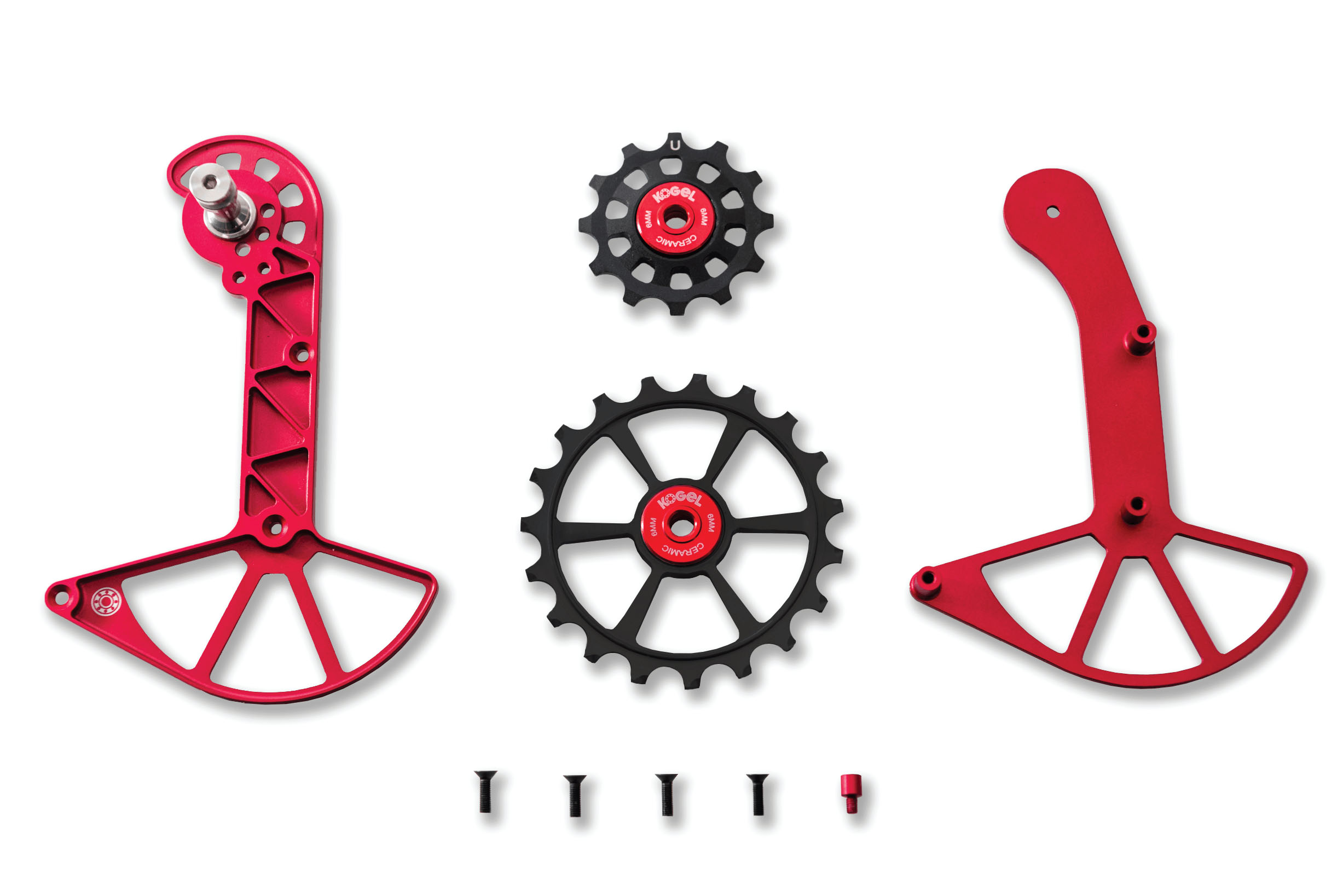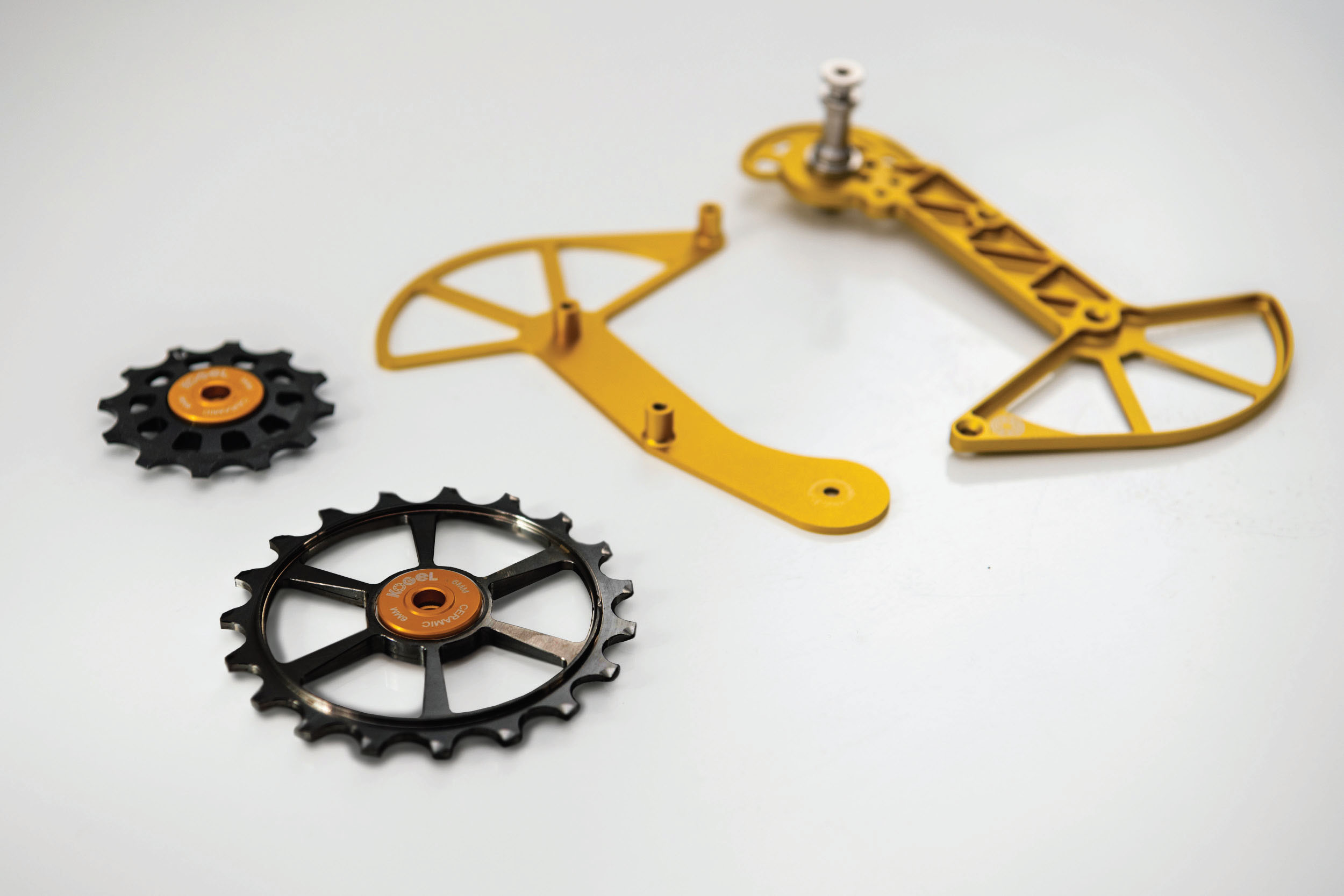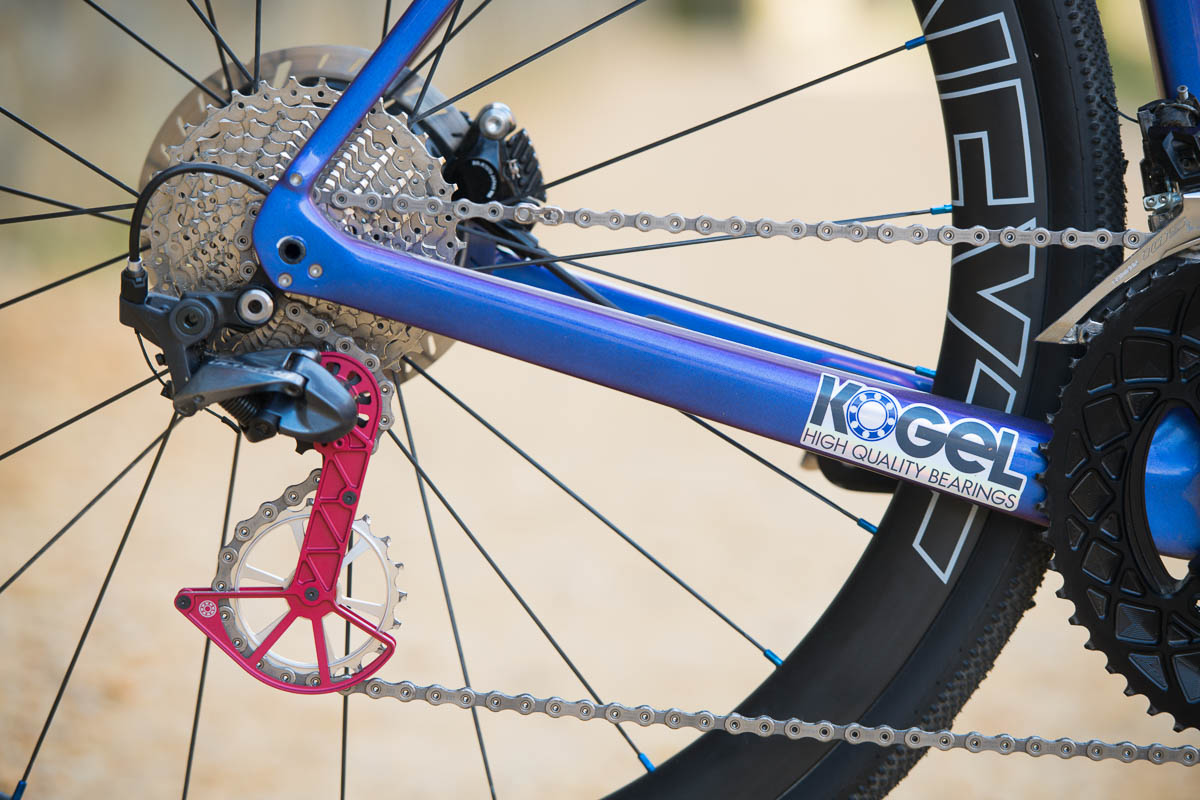Kogel has just announced that they’ve entered the oversized derailleur pulley game with the Kolossos. If you’ve read up on the Kogel blog, you know that the company hasn’t been behind the idea that oversized cages were an improvement for all riders. So what changed? According to owner/founder Ard Kessels, that all comes down to stiffness and better shifting accuracy.
 Kogel claims that competing oversized cages are more flexible and when combined with lower spring tension, negatively affect shifting accuracy and chain retention. In some cases, this may be acceptable, but in instances where crisp & accurate shifting is required, Kogel has always maintained that stock was better.
Kogel claims that competing oversized cages are more flexible and when combined with lower spring tension, negatively affect shifting accuracy and chain retention. In some cases, this may be acceptable, but in instances where crisp & accurate shifting is required, Kogel has always maintained that stock was better.
Enter Kolossos. With a cage that Kogel claims are the stiffest on the market, Kolossos claims to be 3x stiffer than the competitor’s oversized cage and 2x stiffer than a stock cage. According to Kogel, this should make the Kolossos better equipped for both road and offroad riding making this an intriguing option for gravel bikes.
Due to the added stiffness and chain retention features, Kogel says the Kolossos is a bit heavier than competitors at around 80g for the entire assembly depending on the model.
The lower pulley has a longer tooth profile for improved chain retention and a chain catcher feature that claims to prevent chain jams. Fully serviceable, the Kolossos includes a 19t lower pulley and a 12t upper pulley, both with ceramic bearings.
Designed to fit Shimano derailleurs, the Kolossos will be offered in versions to fit Dura-Ace R9100 and Ultegra R8000 as well as RX800 and GRX derailleurs. The cage will fit both SS (short) and GS (medium) cage derailleurs out of the box, and will eventually be offered in custom colors. At the launch, the Kolossos will be available in Black, Fire Engine Red, and Midas Gold and is priced at $400 (with pre-sale pricing of $350). The DA R9100/R8000 model will be available first at the end of January followed by the RX800/GRX model in February.


